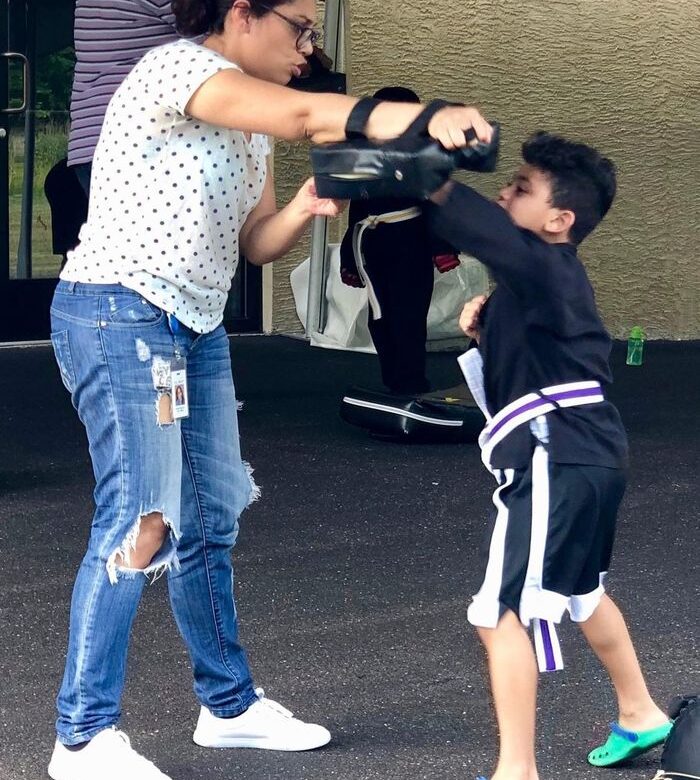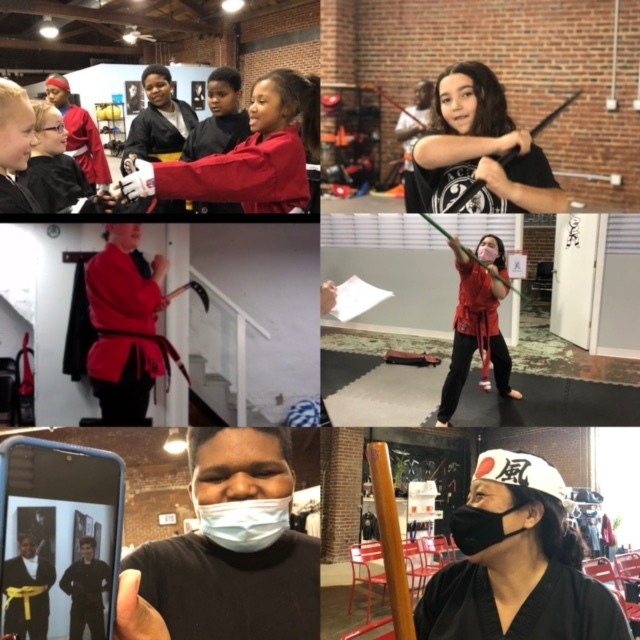If you’re thinking that teaching a kid how to kick and punch and scream “Ayah!” is the last thing you’d want for someone with ADD/ADHD, I can relate to that.
When Action Karate first started over 20 years ago, the thought was that kids with ADD were not a good fit for training. At first, we offered them private lessons so they didn’t disrupt other kids.
Now the reality is this: The kids with ADD are often the leaders in class, the first ones to understand complicated moves, the most creative and the most enthusiastic about practicing. If they were removed from classes, martial arts training would not be as dynamic or energized.
Our instructors have found that harnessing the energy and attention of kids with ADD/ADHD helped them become stellar students at karate as well as outside of the karate school. I’ve always considered myself a student of my students — learning from them and trying to improve based on how they respond. Over this time, I’ve changed and evolved my teaching style to maximize the skills and talents of kids with ADD/ADHD.
Here are 4 common symptoms of ADD/ADHD and how martial arts seamlessly integrates accommodations into typical classes:
- Interrupting. Few things will sink a class more than a student who keeps interrupting the instructor. Other kids can’t hear. It’s distracting. It’s frustrating. It creates a balloon effect where other students also start calling out. No matter how well I’ve prepared for a class, everything goes out the window when someone shouts ‘Hey! I saw Spiderman’ to a room full of 20 third-graders. One method we employ to avoid interruption is to have the kids count out loud as they do various exercises. Giving them the opportunity to verbalize what they are doing and focus on counting helps them stay on task. In addition, the loud counting covers up interruptions. An instructor can then individually address the interruption without affecting the rest of class.
- Trouble waiting their turn. In karate, physical challenges give children something to do while they’re waiting. As a result, it’s like they’re not waiting at all. They are doing arm circles, or balancing on one leg, or holding a plank. These are all physical exercises that keep their bodies active, but also hold their attention so they are concentrating and staying in one place. We also structure the class to organize “turns” in a circular pattern so that going to the next station does not feel like waiting in line, but rather, moving to the next spot of a course. The next strategy to help with this is to actually to give them more turns! For example, an instructor will have a line of students and each one gets to do a kick on the target. Afterward, the student has to run to the back of the room and do 5 push-ups. If the student runs fast and does solid, quick push-ups, the student can get back to the instructor quickly for another turn. Students going at a slower pace don’t miss their turn as they go at the speed that is best for them. This strategy rewards speed and serves as positive reinforcement for excited kids.
- Fidgeting. One of the best ways martial arts addresses fidgeting is by assigning a task to the student’s hands and feet — how and where to stand, how and where to hold the hand. By getting into karate stances, the child is able to avoid fidgeting. In addition, repetitive movement in martial arts helps fulfill the need to fidget. Opening and closing a fist. Extending a foot for a kick. Raising an arm to block. All of these movements can adequately replace fidgeting.
- Lack of focus. Karate class includes ‘focus anchors’ during transitions. Transitions are the hardest time to keep control and it’s easy for students to start wandering off or losing interest. Focus anchors such as “criss cross applesauce” or standing with their hands in fists and arms straight out help kids get through transitions. We are committed to our focus anchors and we use them dozens of times each class. Children expect them and they are prepared. As a result, students know what to do with their bodies during transition and they are able to stay in the same spot and stay engaged for the next activity. On that note, students do look forward to the next drill, which encourages them to remember their focus anchor. Karate is fun. You get to learn cool things.
Instructors do not point out the unwanted behaviors as much as they spotlight the desired behavior. When the instructor says, “Wow look how nicely little Johnny is sitting right now,” it encourages the other students to do what Johnny is doing. It’s a lot friendlier than saying “Johnny, stop spinning in circles!” in front of the class. Johnny is looking for something to do with his energy and we provided it.
The best part of these solutions is that they do not call out the diagnosis or the behavior. They simply allow for an atmosphere that children can experience their symptoms, limit their struggles and thrive in a structured setting.
I realize these strategies won’t work in every setting. There are times a child simply has to wait their turn for a ride or for dinner or a doctor’s appointment. However, the martial arts class is building their self-esteem to succeed around other children and adults, reducing their frustration. They are also learning ways to get out their energy so they are more likely to be confident in other situations.
I always thank parents for bringing their ADD/ADHD kids to martial arts because they bring so much to our classes, they always capture our attention.


